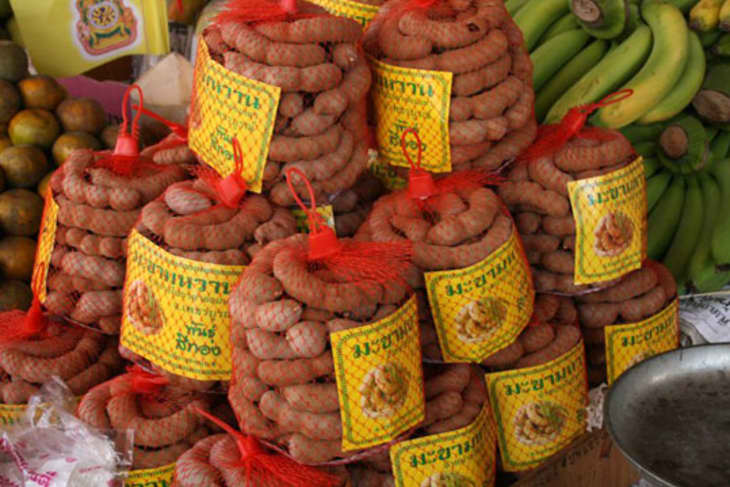Ingredient Spotlight: Tamarind
Tamarind is one of the not-so-secret ingredients in a lot of Asian cooking. Eating a bowl of pad thai or a spoonful of
chutney
Until we started researching this post, we didn’t realize that the tamarind tree is actually native to Africa. The ingredient is so ubiquitous to Southeast Asian cuisine that we assumed it was from there! Tamarind trees have also spread to the Pacific islands, Mexico, and parts of South America, and gets used in the cooking from those regions as well.
The edible portion of the tamarind trees comes from the seed pods, specifically the pulp surrounding the seeds within the pod. This pulp is very tart and sour when slightly under-ripe and grows progressively sweeter as the fruit ripens. It has a bright, citrusy flavor that enhances the other flavors in a dish in much the same way as lemon juice.
Tamarind adds a subtle sour flavor to curries, noodle dishes, soups, and sauces. In can be used in marinades since its acidic qualities help tenderize meat. You’ll also see tamarind used in desserts, candies, and cold beverages, and it’s one of the main ingredients in worcestershire sauce!
You can find tamarind in pod form, as a block of pulpy paste, as a concentrate, or as a powder. We mostly tend to cook with the paste, which needs to be soaked in hot water and strained of seeds before being used. To be honest, we don’t have a lot of experience with the pods themselves – do any of you?
If you’ve never cooked with tamarind before and are curious to try, check out these recipes!
From Around the Web:
• Sweet and Sour Tamarind Chutney from Food and Wine
• Pad Thai from Chez Pim
• Coconut Shrimp with Tamarind Ginger Sauce from Epicurious
Do you do a lot of cooking with tamarind? What’s do you have to say about it?
Related: Cooking by Feel: Indian Flavors and Ingredients
(Images: Flickr members laughlin and neajjean licensed under Creative Commons)
